Seven Questions Over Breakfast with Aaron Becker
 November 11th, 2013 by jules
November 11th, 2013 by jules
See that? Author/illustrator Aaron Becker and Those Clever and Brave Children from Aaron’s Journey are waiting for me to join them for breakfast out in the garden. I think this has become, hands down, my favorite interview picture from this year. (Aaron says he dines on Peanut Butter Captain Crunch when he’s feeling particularly brave, and I see he has some cereal bowls waiting for us.)
Aaron is having a good year. If you follow picture books closely, you’ve probably already noticed this. Journey, his debut picture book, was very recently named one of the New York Times’ Best Illustrated Children’s Books of 2013. In fact, he just illustrated a special cover for yesterday’s children’s issue of the New York Times Book Review. Journey has also been met with glowing reviews all around (mostly starred reviews), has been awarded the 2013 platinum “Best Book Award” by the Oppenheim Toy Portfolio, was nominated for Best Picture Book in the Goodreads Choice Awards, has been garnering Caldecott buzz, and was called nothing short of a “masterwork” by Sarah Harrison Smith in the New York Times.
Back in August, when I chatted briefly with Aaron about this book over at Kirkus, I shared that I found myself with a very early copy of Journey after this post from last year when I sort of stumbled upon Aaron’s artwork and website. I loved it so much that one morning I, no kidding, called an emergency picture book coffee-shop meeting with two friends who love picture books as much as I do, ’cause I just had to show them this book. We sat over our cups of strong coffee and ooh’ed and aah’ed a lot.
And I still think it’s special.
Even though we’ve had that short Kirkus chat this year, I still wanted Aaron to come over for a 7-Imp breakfast, ’cause 7-Imp breakfasts mean we see way more art.
I thank him for visiting. Let’s get to it.

Jules: Are you an illustrator or author/illustrator?
Aaron: Personally, I think of myself as an illustrator first, but that’s because I really love pictures. Without a story, however, I find images get lonely pretty quickly.
Jules: What is your usual medium?
Aaron: Watercolor on 300 lb Arches Aquarelle with pen and ink.
Jules: Where are your stompin’ grounds?
Aaron: Pelham, Massachusetts, which for most people is more easily described as “up the hill from Amherst.”
Jules: Can you talk a bit about your background as an artist?
Aaron: I grew up in Baltimore in the public school system. By the time I graduated high school, I hadn’t had a single art class. And although I was interested in the arts, I was also interested in lots of other stuff, too, and felt that a broader education would help inform whatever I eventually chose to do with my life. In fact, by the time I got to Pomona (in Claremont, CA), my plan was to major in international relations and go live and work in Japan. Go figure.
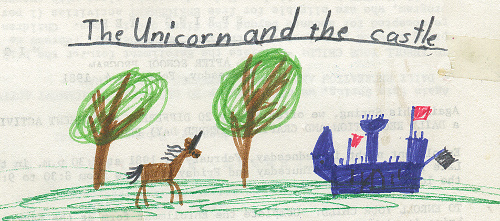
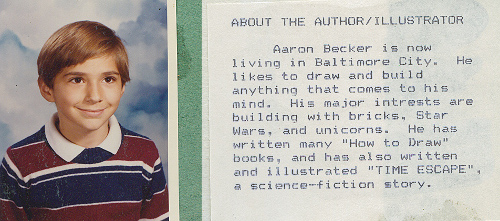
When it finally dawned on me that I loved image-making more than anything else, I was already in my late twenties. I had taught myself a bit about drawing from Ed Emberley books as a kid, but my ability to render what was in my head was very limited. I spent about six months at the Art Center in Pasadena, a rigorous boot camp of a program that teaches the fundamentals in the first couple terms of their illustration program. I would have liked to have stayed longer, but the program was too pricey, so I hedged my bets and left.
Luckily, on my way out the door (literally), I met a film designer working with Doug Chiang, the art director for the new Star Wars films. He encouraged me to send my portfolio and within a few months, I was back in the Bay Area working on the film adaptation of Chris Van Allsburg’s The Polar Express. A dream job. It was there that I really learned the fundamentals of image-making and storytelling. Eight years in and several films later, we moved back East and I started to work on Journey.
(Click each image to enlarge)
Jules: And how about your road to publication?
Aaron: In 1998, I met my editor, Mary Lee Donovan, at an SCBWI event in Monterey, California. At the time, I was dropping out of the graphic design world and thought children’s books would be a good next step. Fifteen years later, she finally agreed to do my first book. So, really, it only took me about a decade and a half.
(Click to enlarge)
(Click to enlarge)
(Click to enlarge)
(Click to enlarge)
Jules: Can you please point readers to your web site and/or blog?
Aaron: www.storybreathing.com.
Jules: Any new titles/projects you might be working on now that you can tell me about?
Aaron: I’ve just finished work on a follow up to Journey, but this is top-secret so don’t tell anyone. Okay, twist my arm. There’s actually a planned story arc that will make a complete trilogy, so there’s more in store for fans of the book. I’m also working on another unrelated title at the moment (with words) about a trio of space knights.
 Coffee’s on, and it’s time to get a bit more detailed with seven questions over breakfast. I thank Aaron again for visiting 7-Imp.
Coffee’s on, and it’s time to get a bit more detailed with seven questions over breakfast. I thank Aaron again for visiting 7-Imp.
1. Jules: What exactly is your process when you are illustrating a book? You can start wherever you’d like when answering: getting initial ideas, starting to illustrate, or even what it’s like under deadline, etc. Do you outline a great deal of the book before you illustrate or just let your muse lead you on and see where you end up?
Aaron: All of my ideas start as little thumbnail scribbles in my sketchbook. This helps me get the pacing of the story quickly, and because I think visually, it’s far more of a natural process than writing things down. In fact, this is really why Journey ended up being wordless. By the time I had the story down on paper, I realized it didn’t need words. At some point, it was suggested that, as an experiment, I should try and add words, but the end result, while satisfying, didn’t improve the original version. So I kept it wordless. Some of the text, however, can be seen in the book trailer for Journey!
(Click to enlarge the last one, which is Aaron modeling for the soldiers)
The story stage of thing can take a long time. My space knight story is now in its fifteenth month of development! I kid you not. I always remind myself that even contemporary masters of storytelling, like the folks who write Pixar’s beloved films, often scrap entire storylines after years of development. It’s surprised me how long this takes, because Journey evolved relatively naturally. But a follow up is a whole ‘nother “story”!
(Click each image to enlarge)
After storyboarding things out, I get into the design of things –- what the world is going to look like. Lots of research here, and this is by far my favorite part of the process. Sometimes, I’ll even use my film background bag of tricks and build “sets” digitally in 3D software packages that allow me to make very sophisticated buildings. While time-consuming, it really pays off, and as far as I know, it’s the only way for me to get the level of detail on paper that’s in my head.
(Click each image to enlarge)
But at some point, I leave all of that computer stuff behind. I have a nice big Epson printer that can print onto heavy watercolor paper, and I take a very light version of whatever composition work I’ve done digitally (along with scanned pencil sketches) and print this out onto the paper before embarking on the real work of illustrating the image.
I first lay in the pen work with a traditional dip pen; this can take me an entire day if the painting is complex enough. Then, it’s on to the watercolors. I generally work from the background forward, but this changes from piece to piece. Often I have to start over. In fact, I actually taught myself how to do watercolors just for this book. A lot of folks warned me against it, as it’s not the most forgiving medium. I spent a summer just practicing over and over, week after week, until I was satisfied with how things were going. It was a steep learning curve, but I’m so glad I stuck to the vision in my head. I am a perfectionist, for better or worse, so I guess I knew I would get there one way or another. All told, it took me about two years to finish the artwork for the book.
2. Jules: Describe your studio or usual work space.
Aaron: Just this past year, we finally converted our mudroom causeway into a studio space for my drawings. It’s so wonderful to have a dedicated space now. There’s a huge glass sliding door just to the side of the table — and a skylight. It’s all north-facing sun, so a perfect place to work.
3. Jules: As a book-lover, it interests me: What books or authors and/or illustrators influenced you as an early reader?
Aaron: Ed Emberley’s drawing books were the single biggest influence for me. David Macaulay’s books as well. And as an adult, I’ve been a big fan of Chris Van Allsburg’s books, especially The Wreck of the Zephyr.

4. Jules: If you could have three (living) authors or illustrators—whom you have not yet met—over for coffee or a glass of rich, red wine, whom would you choose? (Some people cheat and list deceased authors/illustrators. 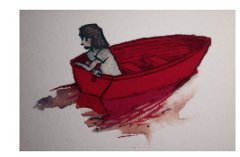 I won’t tell.)
I won’t tell.)
Aaron: What? And put an end to this fantastic breakfast for a lousy glass of wine? Never.
But if you insist: I would trade all three living illustrators for one deceased one, and it would have to be Maurice. I mean, come on.
5. Jules: What is currently in rotation on your iPod or loaded in your CD player? Do you listen to music while you create books?
Aaron: I listen to Radiolab and This American Life.
I know, it’s so predictable. But true.
Hope & Feathers Gallery; Amherst, Massachusetts
(Click each image to enlarge)
6. Jules: What’s one thing that most people don’t know about you?
Aaron: Before our daughter was born and my life got involved in loftier pursuits, I meditated every day—one hour in the morning, one hour in the evening—for eight years straight. If anyone has a clue as to when am I going to have the time for that again, please let me know.
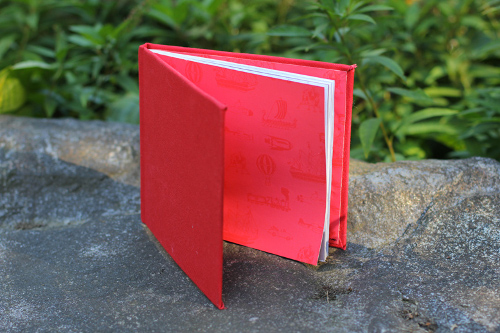
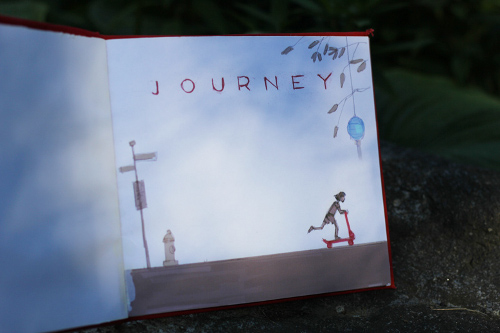

7. Jules: Is there something you wish interviewers would ask you — but never do? Feel free to ask and respond here.
Aaron: Where did the idea for Journey come from?
For me, stories always begin with a sense of place. I was interested in drawing architecture in my film work, and this was where I knew I wanted to head with my picture books — richly detailed places that I wanted to inhabit. I knew the book was going to be a mammoth undertaking, so it was important that these worlds be places I would want to live in for a long time!
I first drew a picture of the waterfall city on a large piece of paper over the course of several days. And from there, the story slowly grew. The girl followed, then the bird, and finally the boy.
The actual theme of the story came about pretty naturally, once I let the girl lead me through her door. As a kid, drawing was a way for me to have a sense of control over what I was experiencing in life, and the girl’s marker is certainly a symbol of that desire that I think many of us have. When the emperor on the air ship takes it away, she seems lost, but in fact, she’s already sewn the seeds for her triumph. By fearlessly freeing the bird, she’s freed herself.
(Click to enlarge)
The reason people are responding so much to the purple bird, I think, is because it represents that thing inside all of us that we need to set free. The beauty of the wordless book is that it can mean different things to different people. We all need to let go of something. I think adults are responding to this more than kids, who are probably more interested in holding onto things! So, that’s why, when the bird and marker come back, it’s such a relief for them. Everybody wins.

Jules: What is your favorite word?
Aaron: “Soft.”
Jules: What is your least favorite word?
Aaron: People have those?
Jules: What turns you on creatively, spiritually or emotionally?
Aaron: Sunny days with low humidity — highs in the 70s, lows in the 60s. I live in the wrong part of the country, don’t I?
Jules: What turns you off?
Aaron: Angry people.
7-Imp: What is your favorite curse word? (optional)
Aaron: People have those?
Jules: What sound or noise do you love?
Aaron: Leaves rustling in the wind. A babbling brook.
Jules: What sound or noise do you hate?
Aaron: Most sounds, actually. Give me silence any day.
Jules: What profession other than your own would you like to attempt?
Aaron: Astronaut, except without all the training bits.
JOURNEY. Copyright © 2013 by Aaron Becker. Published by Candlewick Press, Somerville, MA.
All artwork and images are used with permission of Aaron Becker.
The spiffy and slightly sinister gentleman introducing the Pivot Questionnaire is Alfred, © 2009 Matt Phelan.

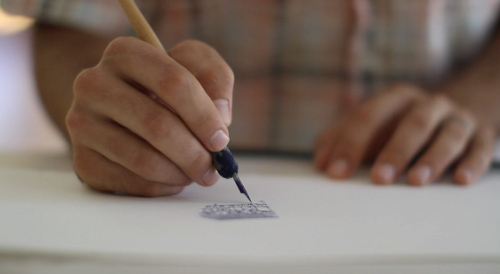
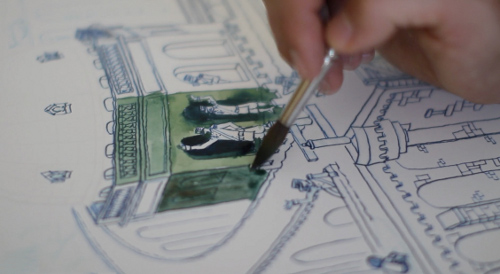

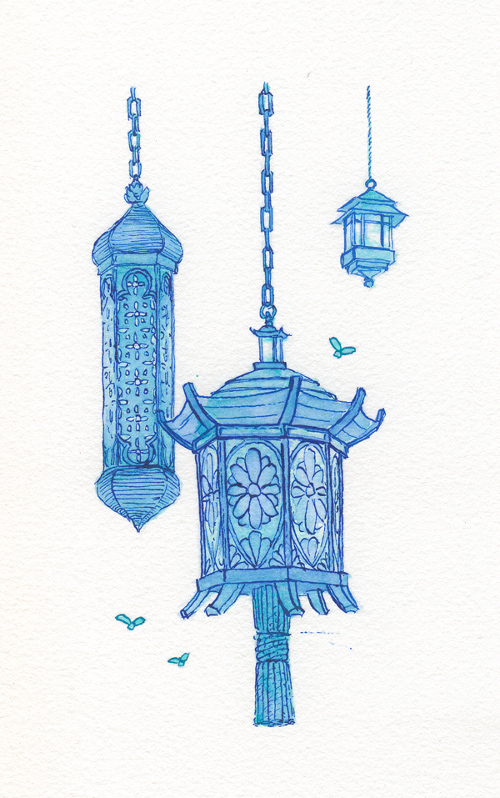
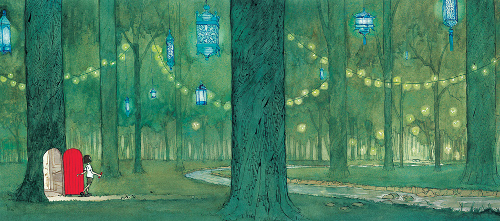
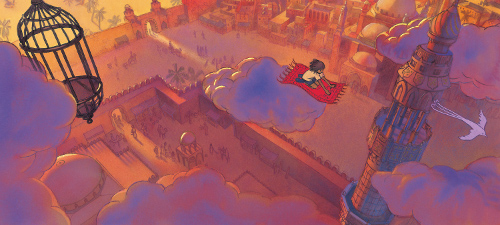
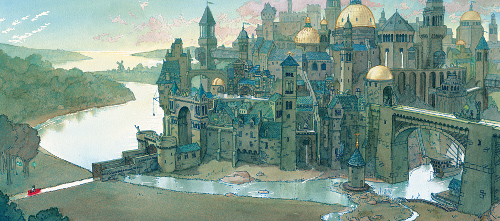
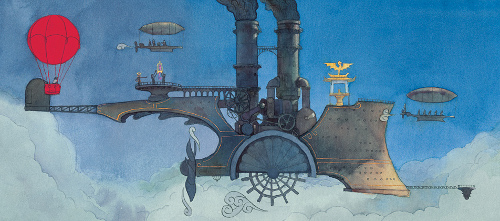
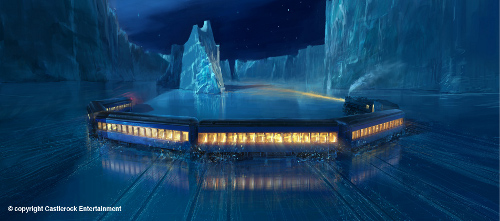
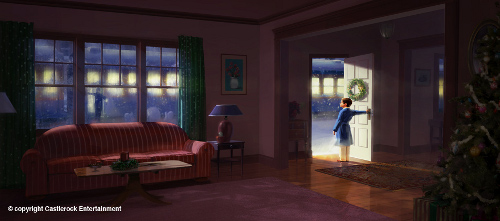
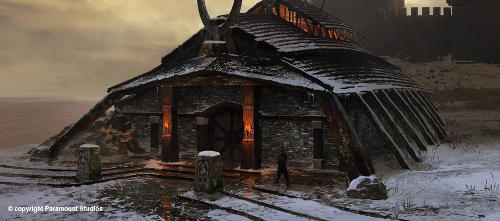

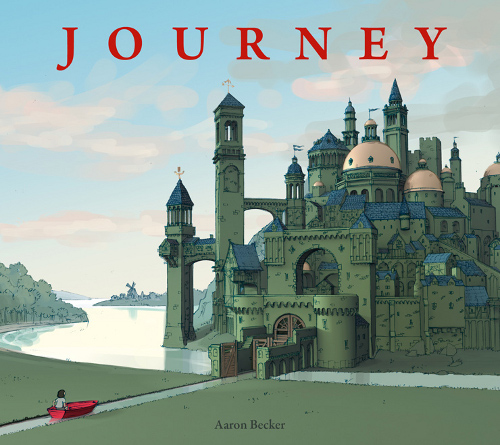
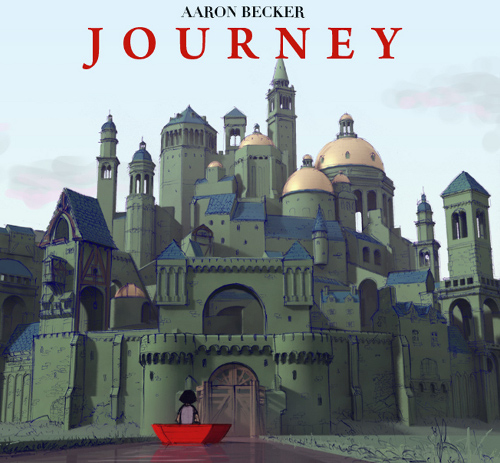
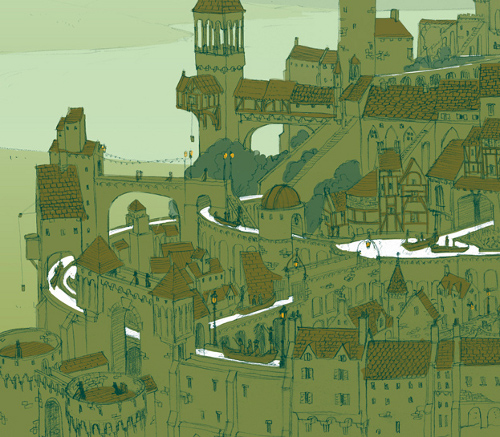

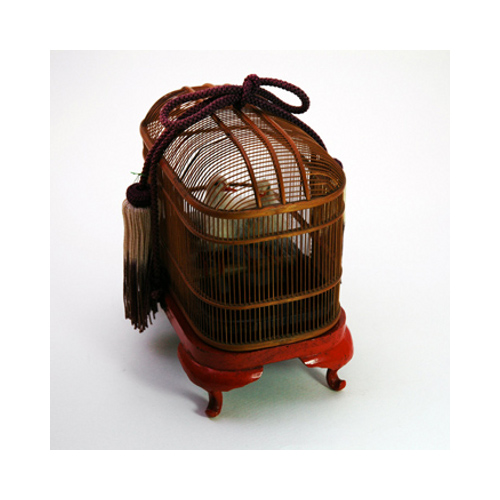

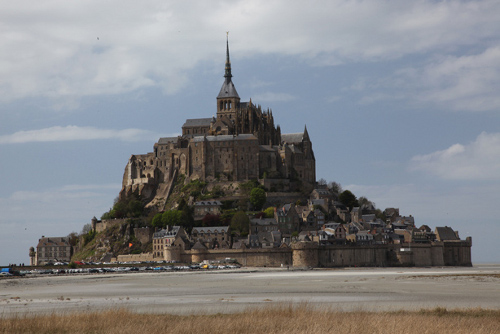

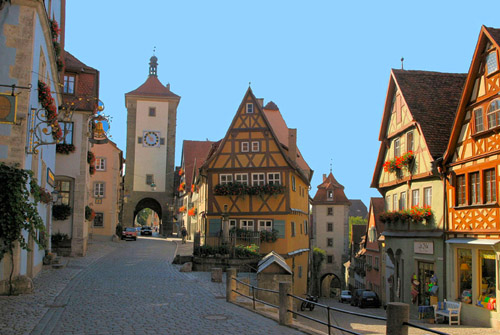

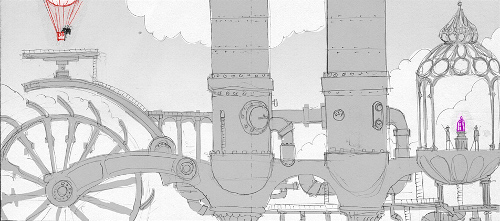
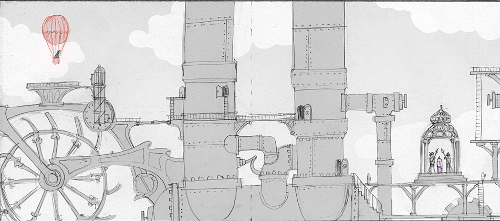
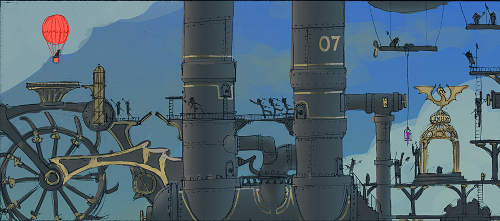
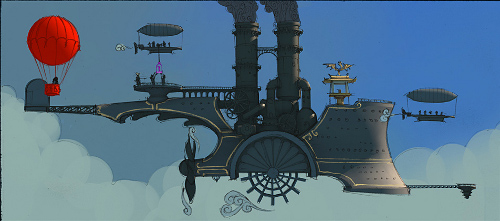
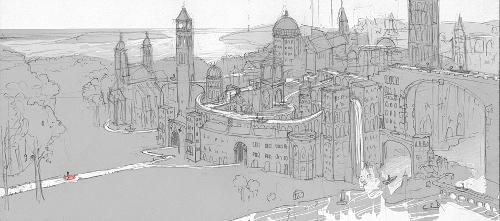
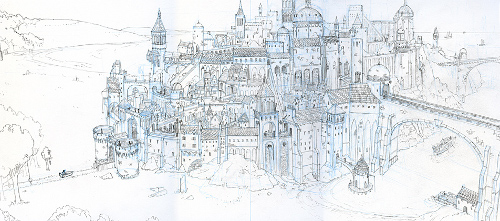


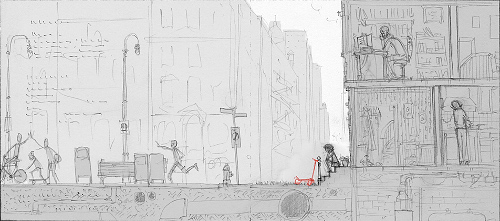

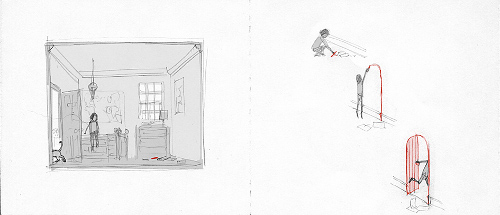





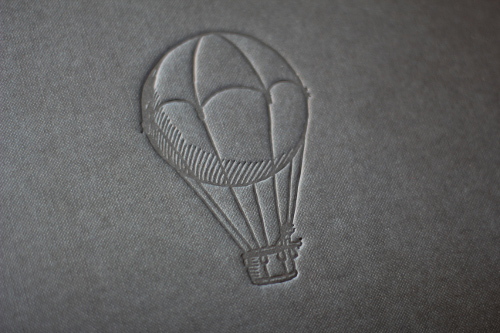

well, this is just such a perfect way to start my morning. Heavy sigh. Jules, did I tell you that Bella (10) loves this book so much she asked us to put up a shelf in her room for Journey. IT now sits there readily accessible for our imaginative pleasure! Thanks for this Jules and Aaron.
Love this interview!!! Can’t wait to show it to my little brother, he loves seeing how artists work. Thanks to both Jules and Aaron for this wonderful gift of an interview 🙂
Lori: I LOVE THAT. Now, that’s loving a book. High-five to Bella. AND a fist bump.
Hi, Jess!
It’s wonderful to hear about someone who went the extra mile, with a lot of patience to create something beautiful for himself and so many others. Thanks, Aaron and Jules
There are many things that I love about this interview. But two particulars… 1. he rediscovered his calling late in his late 20s and 2. those incredible, detailed watercolours. Wow!
Can’t wait to get my hands on this now. Also, as a person who’s been interested in learning to draw for a long time and never gotten around to doing it, it’s a relief to know that such a skilled illustrator started so late!
Everything about this interview warmed my heart and inspired me. Thanks, guys! 🙂
One word. Wow!
I knew the moment that I picked up this book and opened it that I was holding something truly special.
Thank you for a fabulous interview. I love getting to know the the creative person behind the book and I love your questions that are not so predictable.
Brilliant!!!
Wonderful, inspiring interview. I’ve loved this book since you first wrote about it and I saw that image of the blue lantern forest. reading about the process and seeing more art is a gift. Such perseverance!
Terrific to read about AB’s journey to his remarkable book. We own it (happily) and love it. Great interview.
Your timing is perfect! I was just getting ready to write up my “Picture Book of the Week” feature for this book when I noticed your interview here. I LOVE this book. And now my kids do, too :-). I finally shared it with them after I’d spent so much time looking at it. Thanks for a great interview.
[…] Danielson author of Seven Impossible Things Before Breakfast captured Aaron Becker’s work beautifully in her blog post. I recommend this post to anyone […]
[…] around it so i can compose the spread. I'd also need to be able to light it. I saw a post about this guys process (scroll down for the castle) and it's made me want to explore the possibilities offered by […]
[…] the first of a trilogy! And finally, you can learn more about the author in this precious interview here. Such […]
[…] My dream would be something as important as The Giving Tree. Or narrative imaginary tales, like Aaron Becker’s Journey. So the plan is to get my work out and hopefully be assigned stories like that. I try to […]
[…] and https://www.facebook.com/aaronbeckerillustration and a great interview @ http://blaine.org/sevenimpossiblethings/?p=3255 where you will see photos of places where he has ventured which became part of the […]
I recommend that you start trying to meditate again when your child is about 7. You can probably do 15 minutes at that age, if someone else is watching the kid or you have TV. Then, you can add 5 or 10 minutes each year, depending on your kids personality. Good luck with that.
[…] in beauty, in making images that were visually rich and resonant. I especially like Yan Nascimbene, Aaron Becker, Lauren Redniss. Øyvind Torseter’s My Father’s Arms are a Boat breaks my heart every time I […]
[…] sketch and final art(Click each to enlarge) Caldecott Honor-winning illustrator Aaron Becker visits 7-Imp today to talk about the close of his Journey trilogy. Return (Candlewick Press), the […]
[…] good place to start: this week’s interview of Aaron Becker, the author/illustrator of JOURNEY, one of the top books of the year. Check it […]